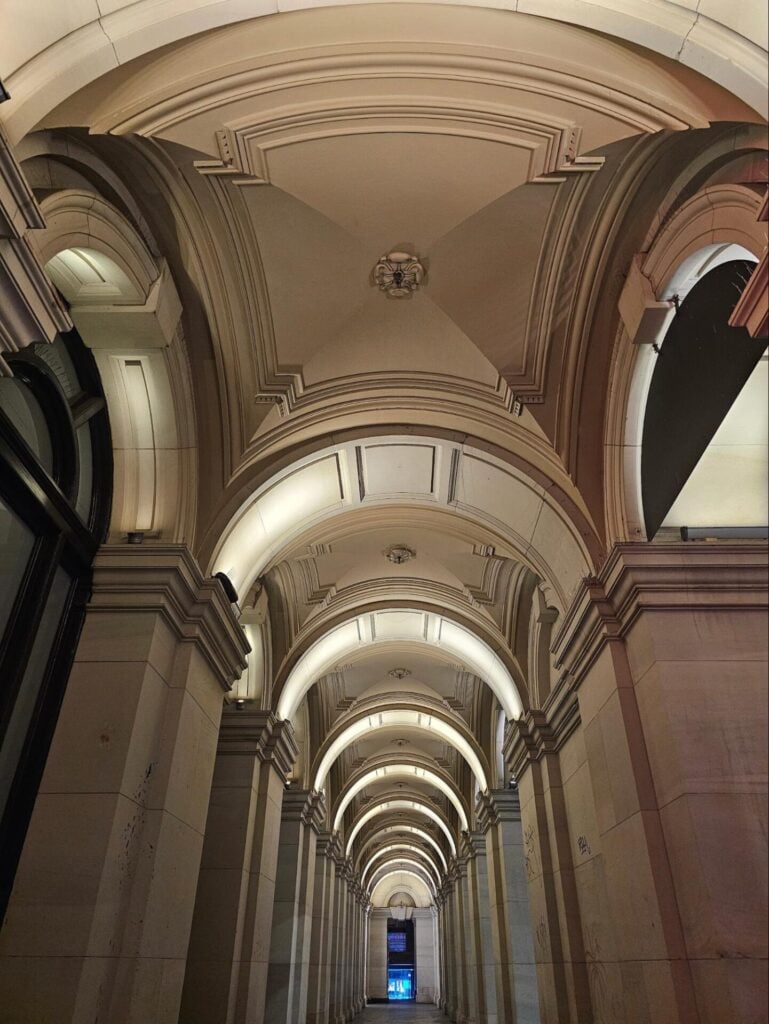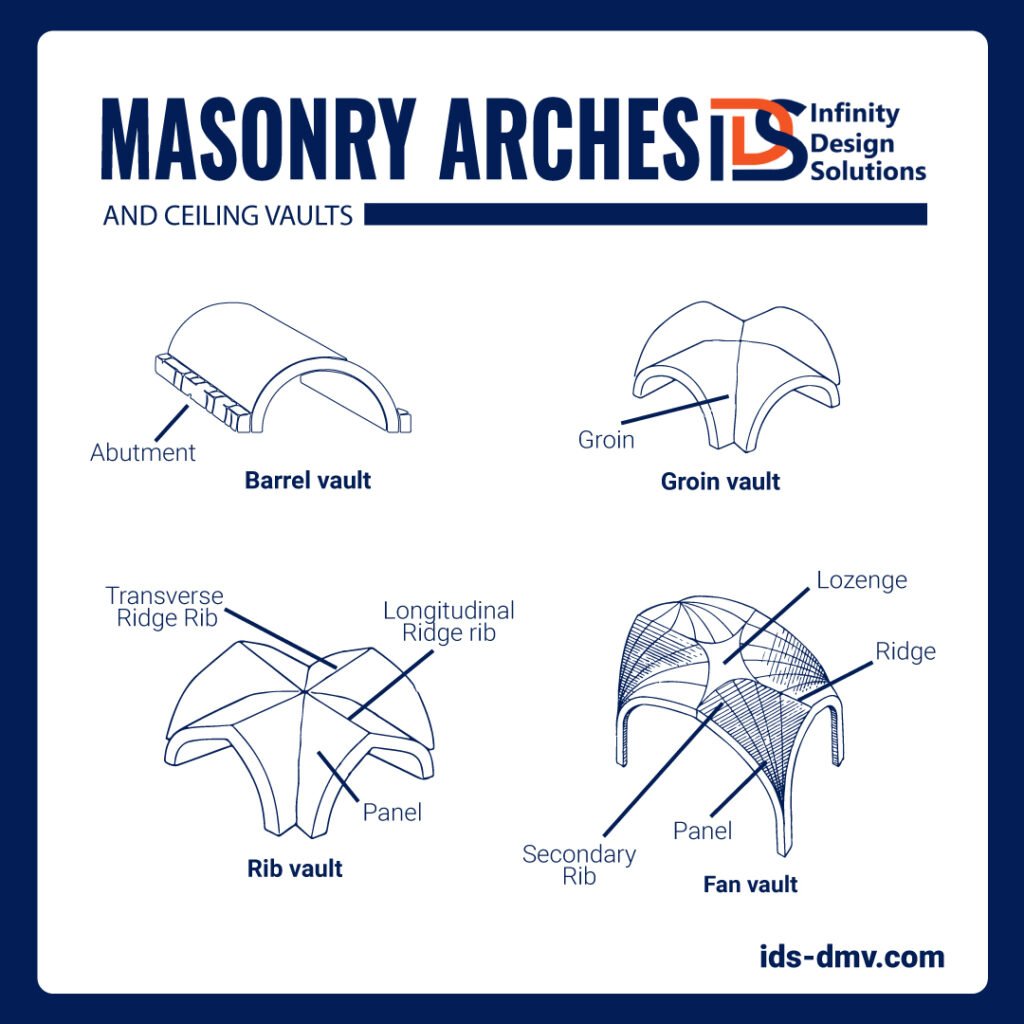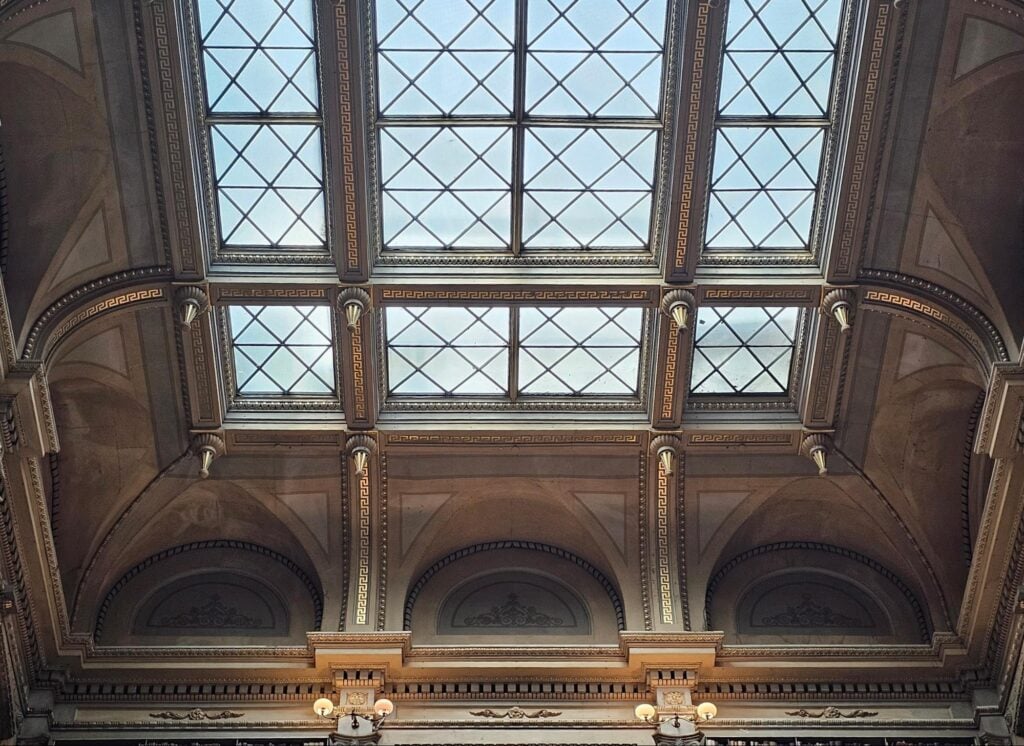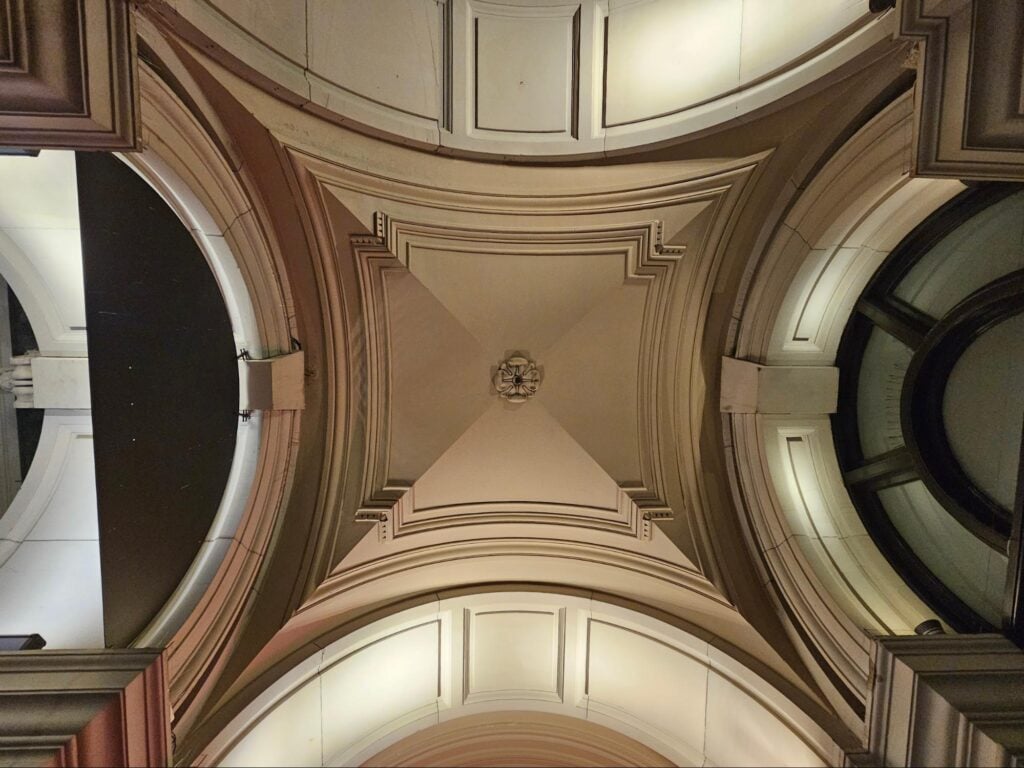Masonry groin vault ceilings, known for their architectural elegance and structural ingenuity, have a rich history dating back to ancient civilizations. These ceilings are characterized by their intersecting barrel vaults, creating a ribbed or groined effect. Found in various architectural styles and structures worldwide, groin vaults have evolved over time, influenced by cultural, technological, and artistic advancements.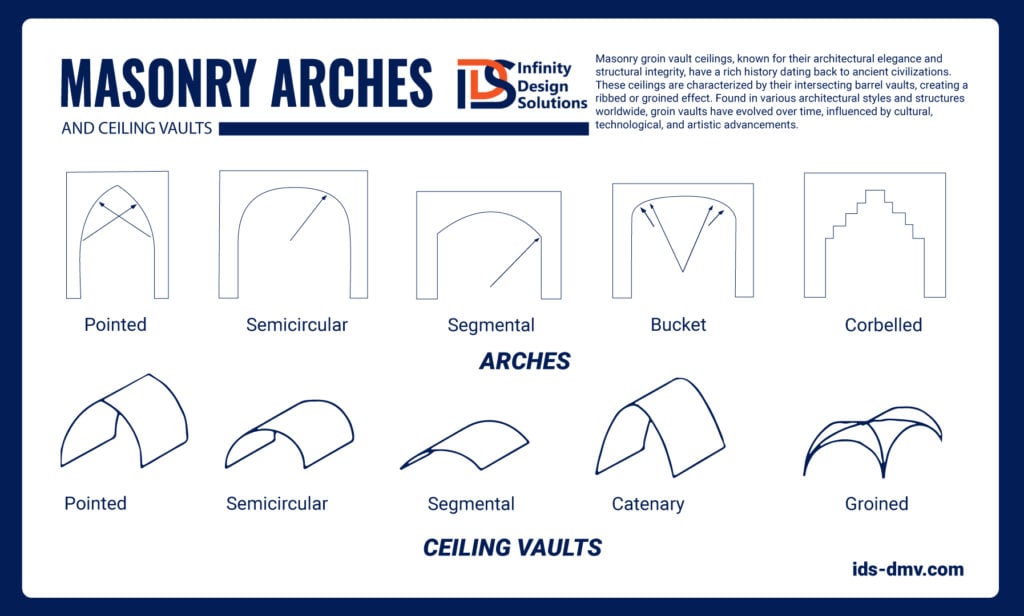
History and Evolution
The origins of groin vault ceilings can be traced back to ancient Roman and Byzantine architecture, where they were used extensively in public buildings, temples, and cathedrals. The Romans perfected the technique of constructing vaulted ceilings using concrete and brick, allowing for larger and more elaborate structures. Byzantine architects further refined the design, incorporating decorative elements such as mosaic tiles and intricate patterns.
During the Gothic period in Europe, groin vaults became a hallmark of cathedral architecture, with soaring ceilings and intricate ribbed designs symbolizing spiritual transcendence. Stonemasons built these vaults using locally sourced materials, such as limestone or sandstone, showcasing their craftsmanship and architectural prowess.
In Renaissance and Baroque architecture, groin vaults continued to be used in palaces, churches, and public buildings, often embellished with decorative plasterwork, frescoes, and sculptures. The advent of new construction techniques and materials, such as reinforced concrete and steel, allowed for greater flexibility in vault design and construction.
Anatomy and Components
A groin vault ceiling consists of two intersecting barrel vaults, creating a ribbed or groined structure. The ribs serve as load-bearing elements, transferring the weight of the ceiling to supporting walls or columns.
Key components of a groin vault include:
Ribs: Structural elements that define the groined pattern of the ceiling. Ribs can be made of stone, brick, concrete, or steel, depending on the architectural style and structural requirements.
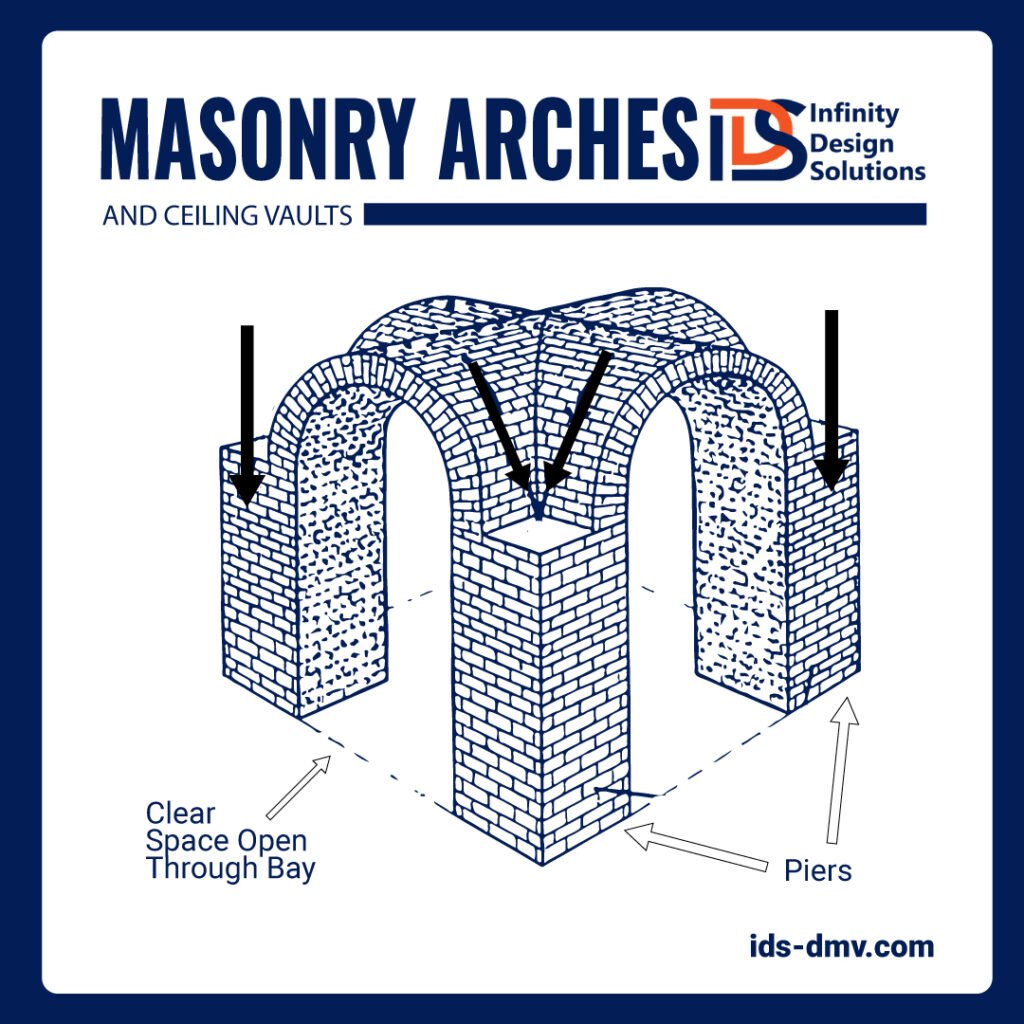
Voussoirs: Wedge-shaped stones or bricks that form the arches of the vault. Voussoirs are carefully cut and fitted together to create a smooth, continuous surface.
Keystone: The central, wedge-shaped stone at the crown of the vault that locks the voussoirs in place and distributes the weight of the ceiling evenly.
Springing Point: The point where the ribs of the groin vault meet the supporting walls or columns. This is where the load of the vault is transferred to the underlying structure.
Spandrels: The triangular spaces between the ribs of the vault, often filled with decorative plasterwork, sculptures, or paintings.
Famous Examples:
Numerous historic buildings around the world feature magnificent groin vault ceilings, showcasing the architectural and artistic achievements of their respective eras.
Some noteworthy examples include:
Hagia Sophia (Istanbul, Turkey): Built in the 6th century, the Hagia Sophia boasts a grand groin vault ceiling adorned with intricate mosaics and calligraphic inscriptions.
Chartres Cathedral (Chartres, France): A masterpiece of French Gothic architecture, Chartres Cathedral features a series of stunning groin vaults embellished with stained glass windows depicting biblical scenes.
Palazzo Vecchio (Florence, Italy): This Renaissance palace features a magnificent groin vault ceiling in its Hall of the Five Hundred, adorned with elaborate frescoes by renowned artists such as Leonardo da Vinci and Michelangelo.
Alhambra Palace (Granada, Spain): The Moorish palace complex of Alhambra showcases intricate muqarnas vaulting, a type of ornamental groin vault characteristic of Islamic architecture.
Sainte-Chapelle (Paris, France): Known for its stunning stained glass windows and ribbed groin vaults, Sainte-Chapelle is a masterpiece of French Gothic architecture.
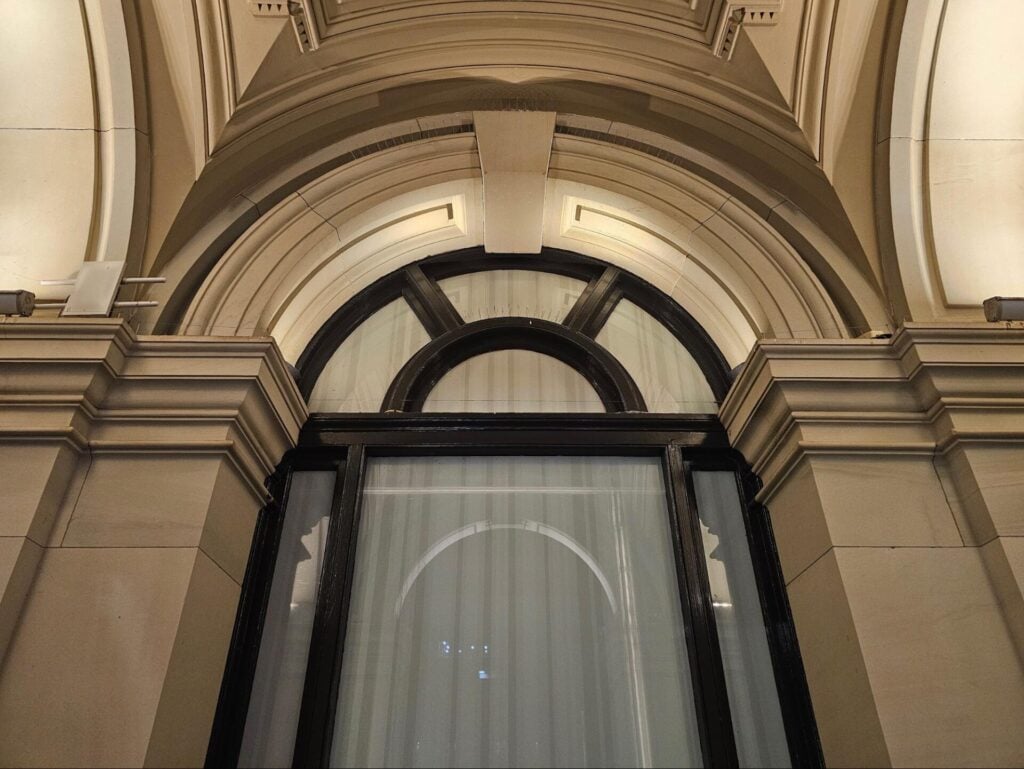 Materials and Sourcing
Materials and Sourcing
Groin vaults, like most historic masonry works, are typically constructed using locally sourced materials, reflecting the geological and cultural characteristics of the region. Common types of stone masonry used in groin vault construction include limestone, sandstone, marble, and granite. These materials are quarried from nearby sources and processed into blocks or slabs before being cut and shaped by stonemasons.
In addition to natural stone, modern construction methods may incorporate concrete, reinforced with steel rebar, to create durable and cost-effective groin vaults. While traditional materials offer timeless beauty and authenticity, contemporary alternatives provide greater flexibility and efficiency in construction.
Comparisons with Alternatives
Compared to other ceiling types, such as flat ceilings or dome ceilings, groin vaults offer several advantages in terms of structural strength, aesthetic appeal, and spatial definition. The ribbed design of groin vaults distributes the weight of the ceiling evenly, allowing for larger interior spaces without the need for additional support columns or beams. Additionally, the intersecting arches of groin vaults create dynamic patterns of light and shadow, enhancing the visual interest of the space.
In contrast, flat ceilings lack the architectural complexity and character of groin vaults, while dome ceilings may be more challenging to construct and maintain. Groin vaults strike a balance between structural integrity and design versatility, making them a popular choice for a wide range of architectural styles and applications.
The groin vault, while distinctive in its intersecting barrel vaults, shares similarities and differences with other types of vaulted ceilings, including the barrel vault, rib vault, and fan vault.
Barrel Vault:
The barrel vault is a simple, semicircular ceiling structure that resembles the shape of a barrel or tunnel. Unlike the groin vault, which intersects two barrel vaults, the barrel vault consists of a single continuous curve. This makes the barrel vault well-suited for long, linear spaces, such as corridors or hallways, where it provides structural support and visual continuity. However, barrel vaults lack the dynamic interplay of intersecting ribs found in groin vaults, resulting in a more uniform and less intricate ceiling design.
Rib Vault:
Similar to the groin vault, the rib vault features a series of arched ribs that support the ceiling and distribute its weight to the supporting walls or columns. However, in a rib vault, the ribs extend diagonally from the corners of the room, forming a network of intersecting arches that create a ribbed or skeletal appearance. This gives rib vaults a more open and airy feel compared to groin vaults, which may be preferred in larger or more spacious interiors. Additionally, rib vaults offer greater design flexibility, allowing for variations in rib spacing, curvature, and ornamentation.
Fan Vault:
Distinctive for its intricate fan-shaped patterns radiating from a central point, the fan vault is a hallmark of English Gothic architecture, particularly in cathedral construction. Unlike the groin vault, which relies on intersecting barrel vaults, the fan vault is a single continuous structure with no intersecting ribs. Instead, the ribs of the fan vault radiate outward like the spokes of a wheel, creating a visually stunning and ornate ceiling design. While fan vaults are admired for their elaborate craftsmanship and decorative appeal, they are less common and more technically challenging to construct than groin vaults.
In summary, each type of vaulted ceiling offers unique advantages and aesthetic qualities, depending on the architectural context and design objectives. While the groin vault excels in providing structural support and spatial definition through its intersecting barrel vaults, the barrel vault, rib vault, and fan vault each contribute to the rich tapestry of architectural expression and innovation.
We can Help
We can help with a variety of historic masonry restoration needs and upkeep, from modest tuckpointing and or repointing to complicated and extensive historic masonry restoration. Infinity Design Solutions is a historic restoration specialist contractor specializing in both historic masonry restoration such as tuck pointing our repointing, and brick repair. If you have questions about the architectural details or facade of your historic building in Washington DC, reach out and say hello and if we can help we’ll be glad to assist you. You can email us or call us on the telephone at the following link: contact us here.

